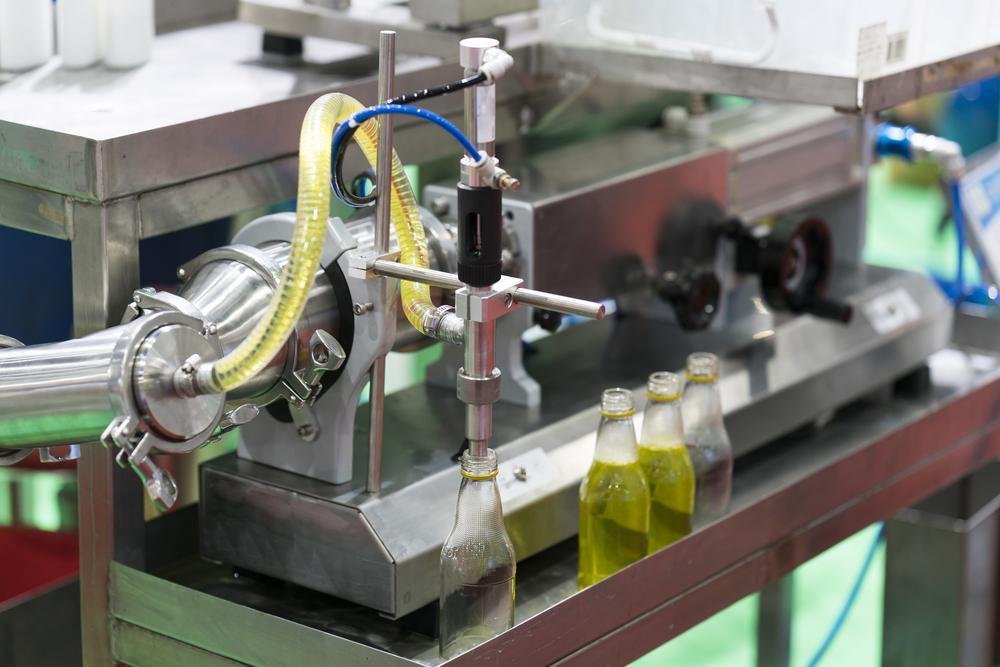Ever wondered how machines stay leak-free and function smoothly? Meet the unsung hero: cartridge seals! These small but mighty components are crucial in keeping various equipment running efficiently across multiple industries.
From food processing to pharmaceuticals and beyond, cartridge seals are the unsung heroes that keep the machinery running like clockwork. Their importance cannot be overstated, as they help maintain efficiency, reduce wear and tear, and prevent costly breakdowns. Click here to learn more information about these fascinating components.
Table of Contents
How Cartridge Seals Work
Understanding how cartridge seals work can be both fascinating and useful. Here are the essential components of a cartridge seal, their functions, and how they work together to form an effective sealing mechanism.
Cartridge Seal Basics
Seal Face
This is the principal sealing element, which is often comprised of carbon, silicon carbide, or tungsten carbide. It forms a smooth, flat surface that comes into contact with the mating ring to make a tight seal.
Mating Ring
Also known as the fixed face, this component collaborates with the seal face to produce a sealing barrier. It is often built of materials comparable to the seal face and is intended to remain stationary.
Secondary Sealing Elements
These parts provide additional sealing support, typically in the form of elastomers or other flexible materials like rubber or PTFE. They ensure a secure fit between the other components and prevent fluid from escaping around the seal face and mating ring.
Spring
The spring applies force to the seal face, ensuring constant contact with the mating ring. This pressure maintains the effectiveness of the sealing process.
The Function of Each Component
Each component of a cartridge seal works together to create an effective barrier against leaks. The seal face and mating ring form the primary sealing surfaces, while the secondary sealing elements ensure a snug fit.
The spring provides the necessary force to maintain constant contact between the seal face and the mating ring.
Process of Sealing
The sealing process begins when the seal face and mating ring come into contact, forming a tight barrier against leaks. As the machine operates, the spring maintains pressure on the seal face, ensuring constant contact with the mating ring.
The secondary sealing elements help secure the seal by filling gaps between the components.
Types of Cartridge Seals
Cartridge seals come in various types, each designed to meet the unique requirements of different machinery and applications. Understanding the differences and suitable applications for each type is essential when selecting the right cartridge seal for your needs.
Single Cartridge Seals
Single cartridge seals consist of one seal face and one mating ring. They provide a basic level of protection and are suitable for many general-purpose applications. These seals are typically more affordable and easier to install than double cartridge seals. However, they may not be ideal for high-pressure environments or challenging working conditions.
Double Cartridge Seals
Double Cartridge Seals Double cartridge seals have two sets of seal faces, and mating rings positioned back-to-back or tandem. These seals offer greater leak protection and are ideal for handling hazardous or corrosive fluids.
Double cartridge seals provide enhanced reliability and are commonly used in demanding applications. However, they can be more expensive and complex to install than single-cartridge seals.
Balanced and Unbalanced Seals
Balanced and unbalanced seals refer to the way the seal handles pressure. Balanced seals evenly distribute pressure across the seal face, reducing wear and improving the seal’s lifespan. These seals are ideal for high-pressure applications or where heat buildup could be a concern.
On the other hand, unbalanced seals are more suited for low-pressure environments, as they experience uneven pressure distribution, which can result in increased wear over time.
Differences and Suitable Applications for Each Type
- Single Cartridge Seals: Ideal for general-purpose applications with moderate pressures and temperatures. They are cost-effective and straightforward to install.
- Double Cartridge Seals: Recommended for demanding applications involving hazardous or corrosive fluids, high pressures, and extreme temperatures. They provide enhanced reliability and protection against leaks but can be more expensive and challenging to install.
- Balanced Seals: Best for high-pressure environments or situations where heat buildup is a concern. They offer improved wear resistance and longer seal life.
- Unbalanced Seals: Suitable for low-pressure applications where cost and ease of installation are prioritized over wear resistance and longevity.
Benefits of Cartridge Seals
Cartridge seals offer numerous advantages over other seals, making them popular in various industries.
Easy Installation and Maintenance
- Pre-assembled design simplifies the installation process.
- Eliminates the need for complicated measurements or adjustments.
- Faster and more convenient maintenance compared to other seal types.
Enhanced Performance
- Precisely engineered components ensure optimal sealing.
- Less prone to errors during installation, leading to better performance.
- Suitable for a wide range of applications and operating conditions.
Extended Seal Life
- High-quality materials and design contribute to longer-lasting seals.
- Reduced wear and tear on components.
- Lower risk of unexpected seal failures, minimizing downtime.
Reduced Leakage and Environmental Impact
- Effective sealing reduces fluid leakage, minimizing waste and contamination.
- Compliance with environmental regulations in many industries.
- Contributes to a cleaner and safer working environment.
Common Industries Using Cartridge Seals

Cartridge seals are essential for a wide range of industries, ensuring machinery’s smooth and efficient operation. Here, we’ll take a quick look at five common sectors that rely on cartridge seals to maintain their equipment:
- Chemical Processing: They help prevent leaks and contamination while handling hazardous and corrosive chemicals. Their durability and reliability make them the top choice for sealing pumps and mixers.
- Food and Beverage: As we all know, maintaining hygiene and safety standards is vital in the food and beverage industry. Cartridge seals are used in processing equipment like mixers, pumps, and valves to prevent contamination and ensure that products remain safe for consumption.
- Pharmaceutical: The pharmaceutical industry relies on cartridge seals for maintaining strict cleanliness and sterility requirements. These seals are used in equipment like reactors, mixers, and pumps to prevent cross-contamination and ensure the purity of medicines.
- Water Treatment: Cartridge seals are utilized in pumps, mixers, and other equipment to secure the flow of water and prevent leaks. Their reliable performance helps maintain water quality and supports the effective treatment of our most valuable resource.
- Oil and Gas: This industry uses cartridge seals in various applications, such as pumps, compressors, and valves. They are essential for preventing leaks and ensuring oil and gas products safe transport and processing.
Cartridge Seal Maintenance and Troubleshooting
Proper maintenance of cartridge seals is essential for the efficient functioning of machines like pumps and compressors.
Routine Maintenance Practices
- Regularly inspect the seal for damage or wear.
- Keep the sealing surfaces clean and free of debris.
- Ensure proper lubrication of the seal.
- Monitor the seal’s performance and keep records.
- Replace worn or damaged components promptly.
Signs of Wear and Failure
- Excessive leakage or fluid loss.
- Abnormal noises or vibrations.
- Overheating or temperature fluctuations.
- Reduced machine performance or efficiency.
- Visible wear or damage to the seal components.
Common Issues and Their Solutions
Issue: Excessive leakage
Solution: Inspect and replace worn or damaged seal components.
Issue: Overheating
Solution: Ensure proper lubrication and inspect for damage or debris.
Issue: Noise or vibration
Solution: Check for proper alignment and inspect for worn components.
Issue: Reduced performance
Solution: Inspect the seal and other machine components for wear or damage.
When to Consult a Professional
- If you are unsure about how to perform maintenance tasks.
- When encountering complex or persistent issues.
- If you need guidance on selecting the appropriate cartridge seal for your application.
- For training or advice on proper installation and maintenance practices.
Conclusion
Cartridge seals play a significant role in preventing leaks in various types of machinery, such as pumps and compressors. They consist of four main components: the seal face, mating ring, secondary sealing elements, and spring. Each part works together to create a compelling and secure barrier against fluid leaks.
Grasping the fundamentals of cartridge seals is essential for anyone interested in the mechanics of machines. This knowledge deepens our appreciation for the intricate systems that keep our equipment running efficiently and helps identify potential issues and maintain machinery for optimal performance.










